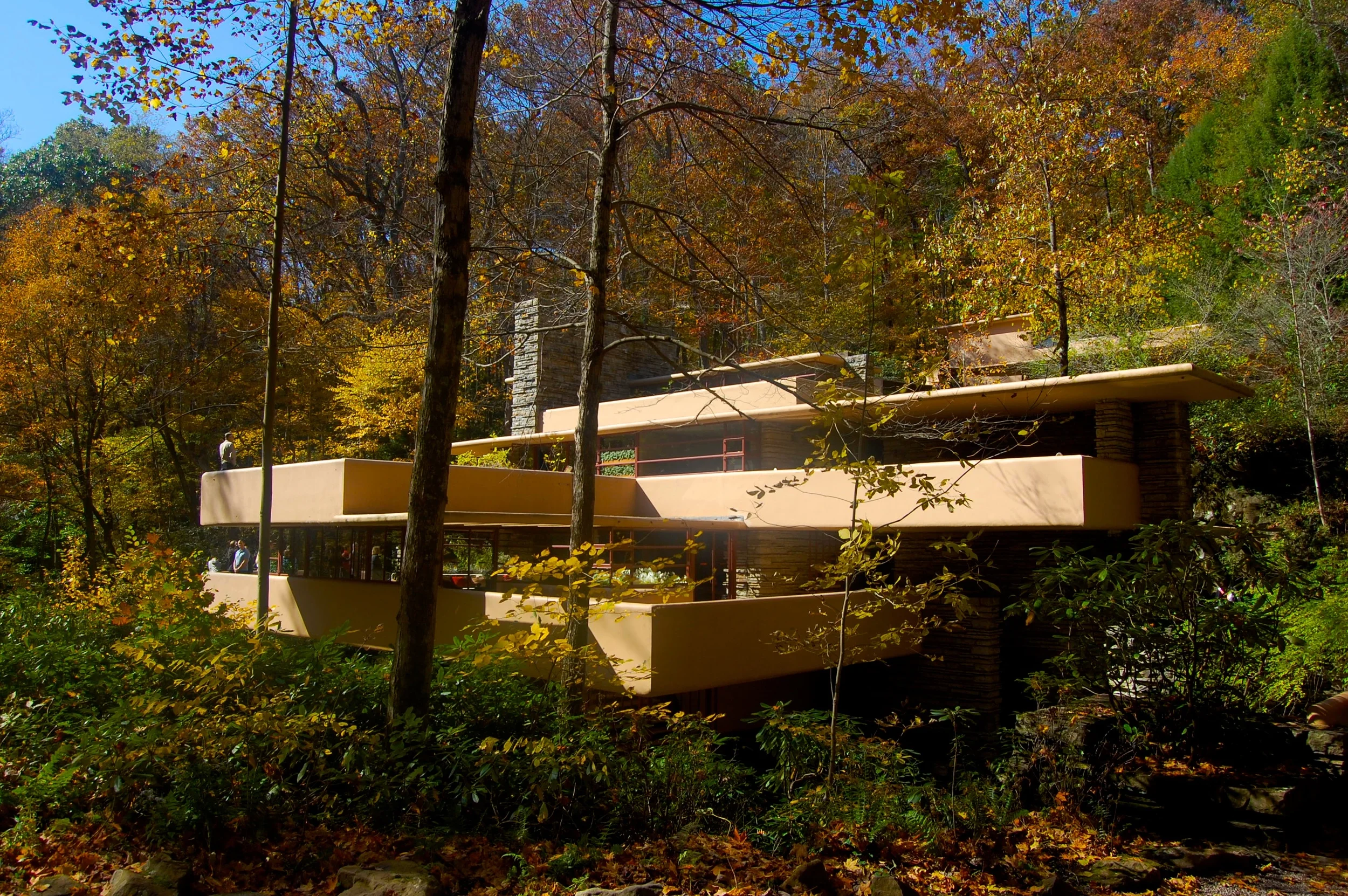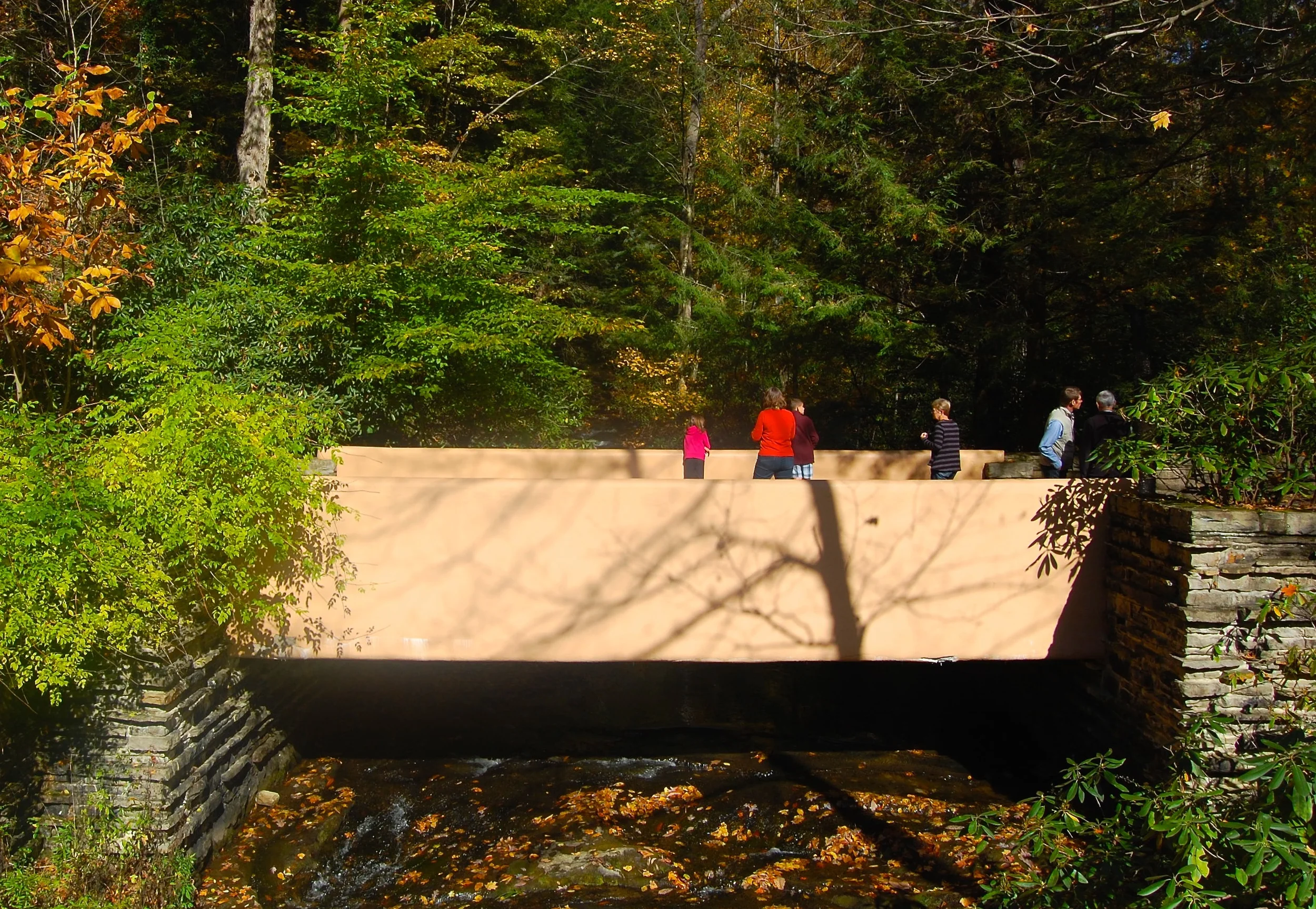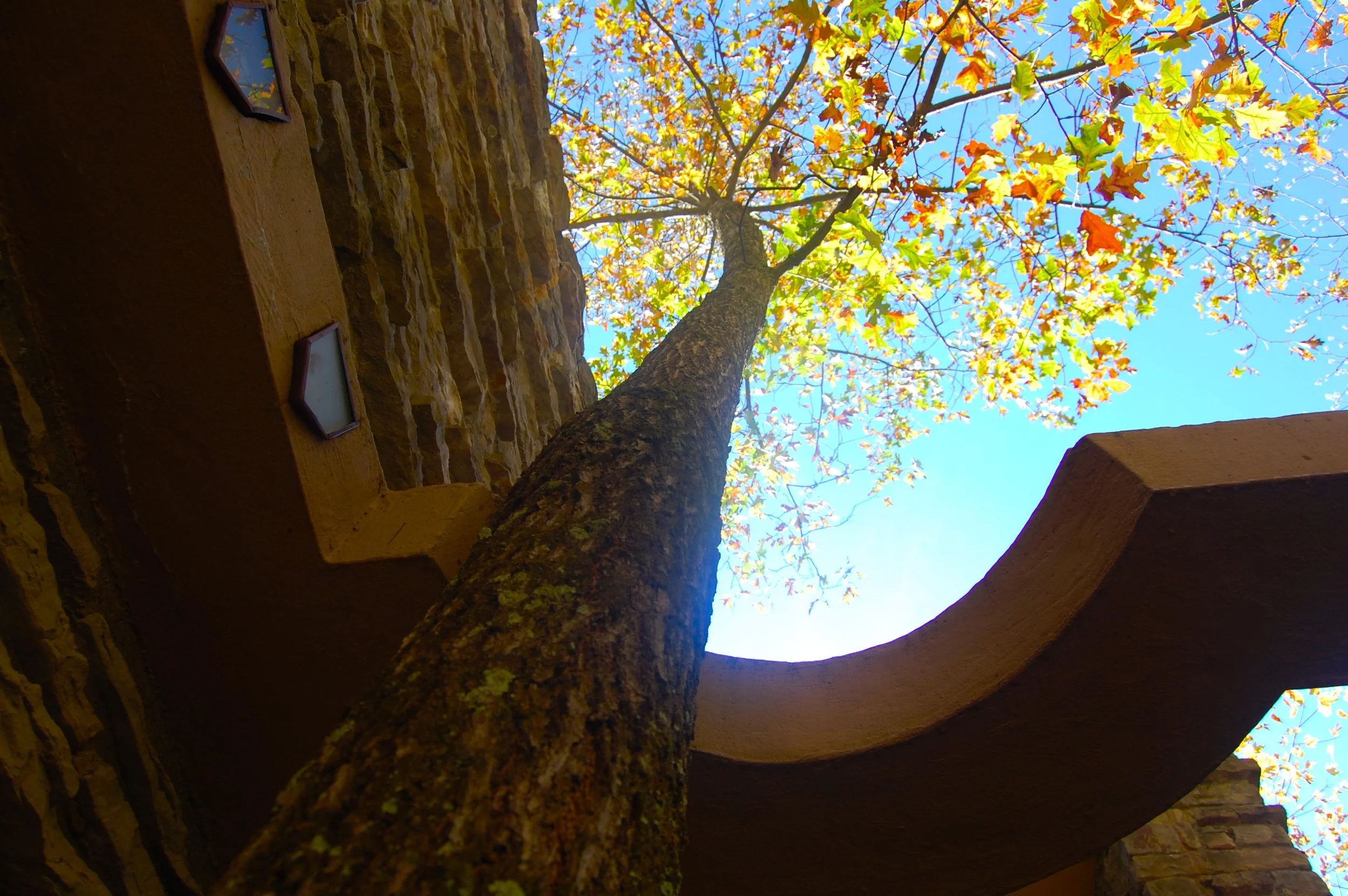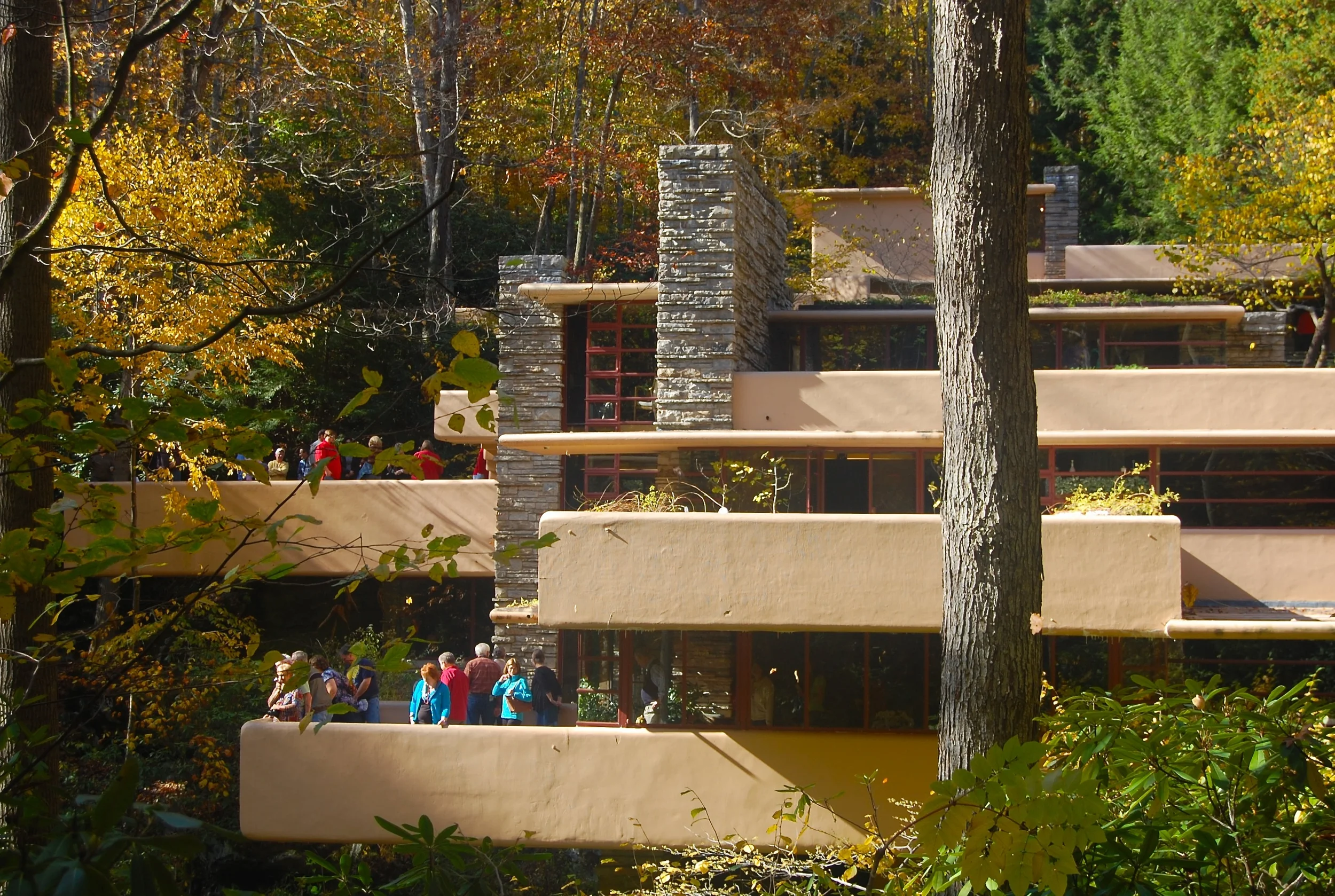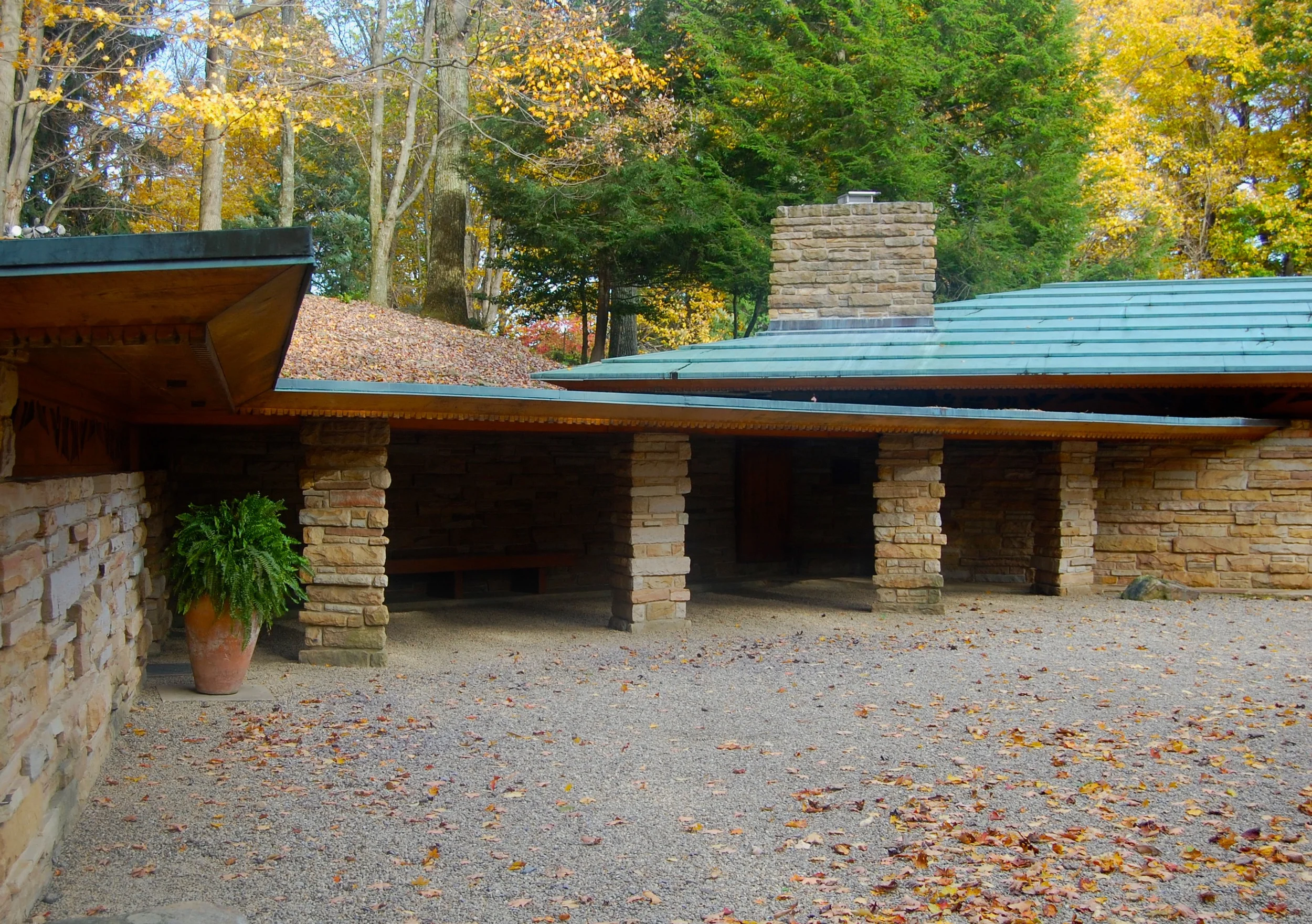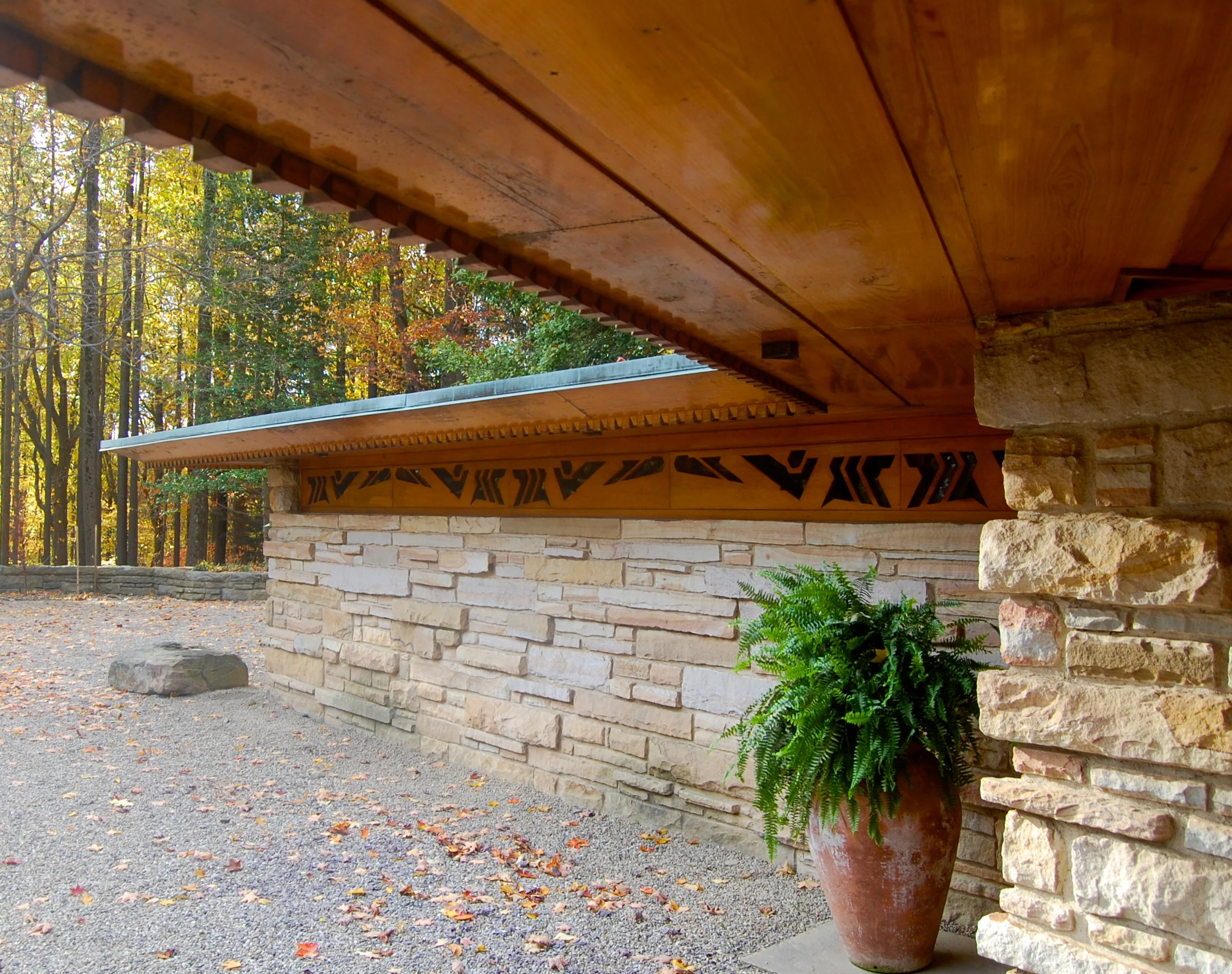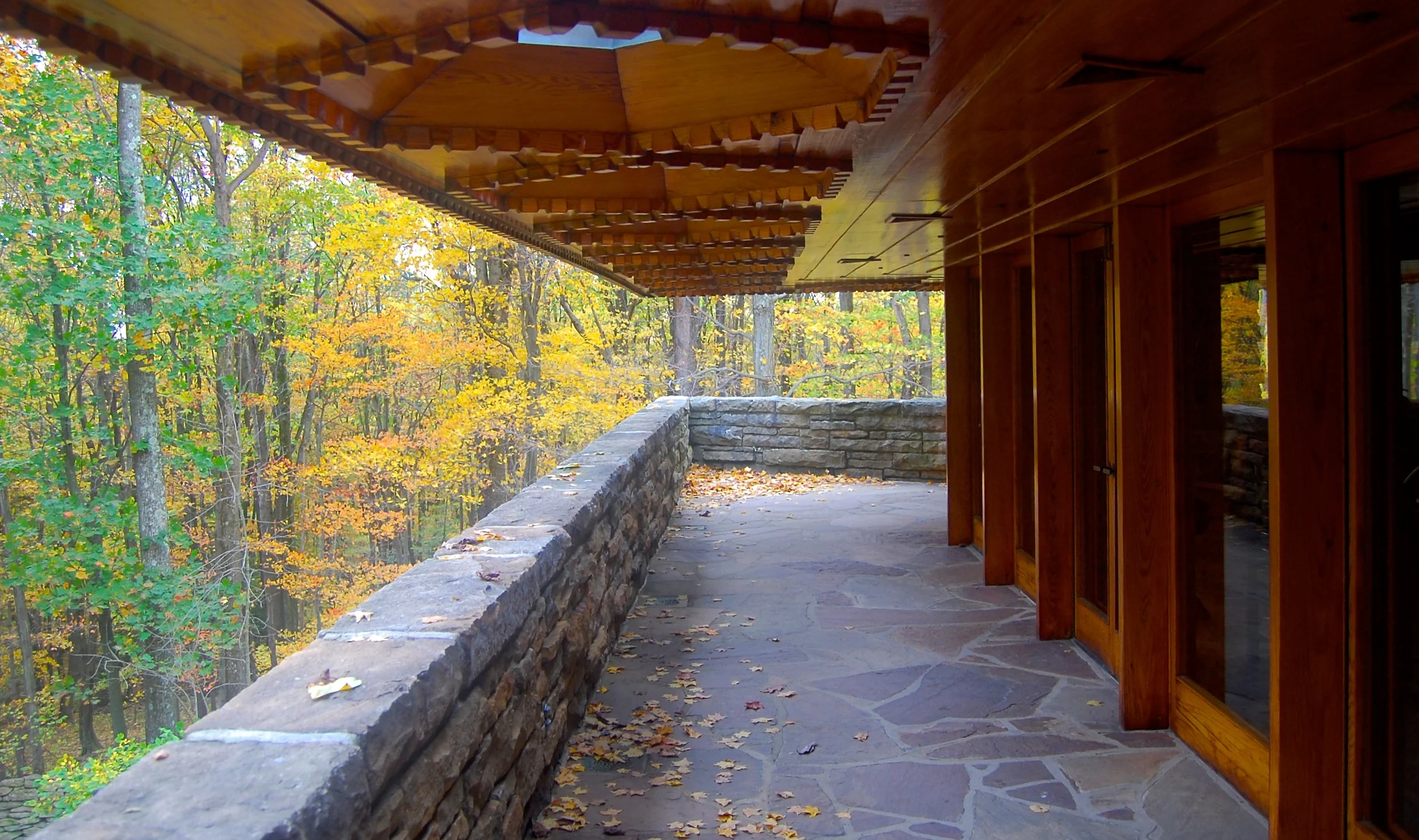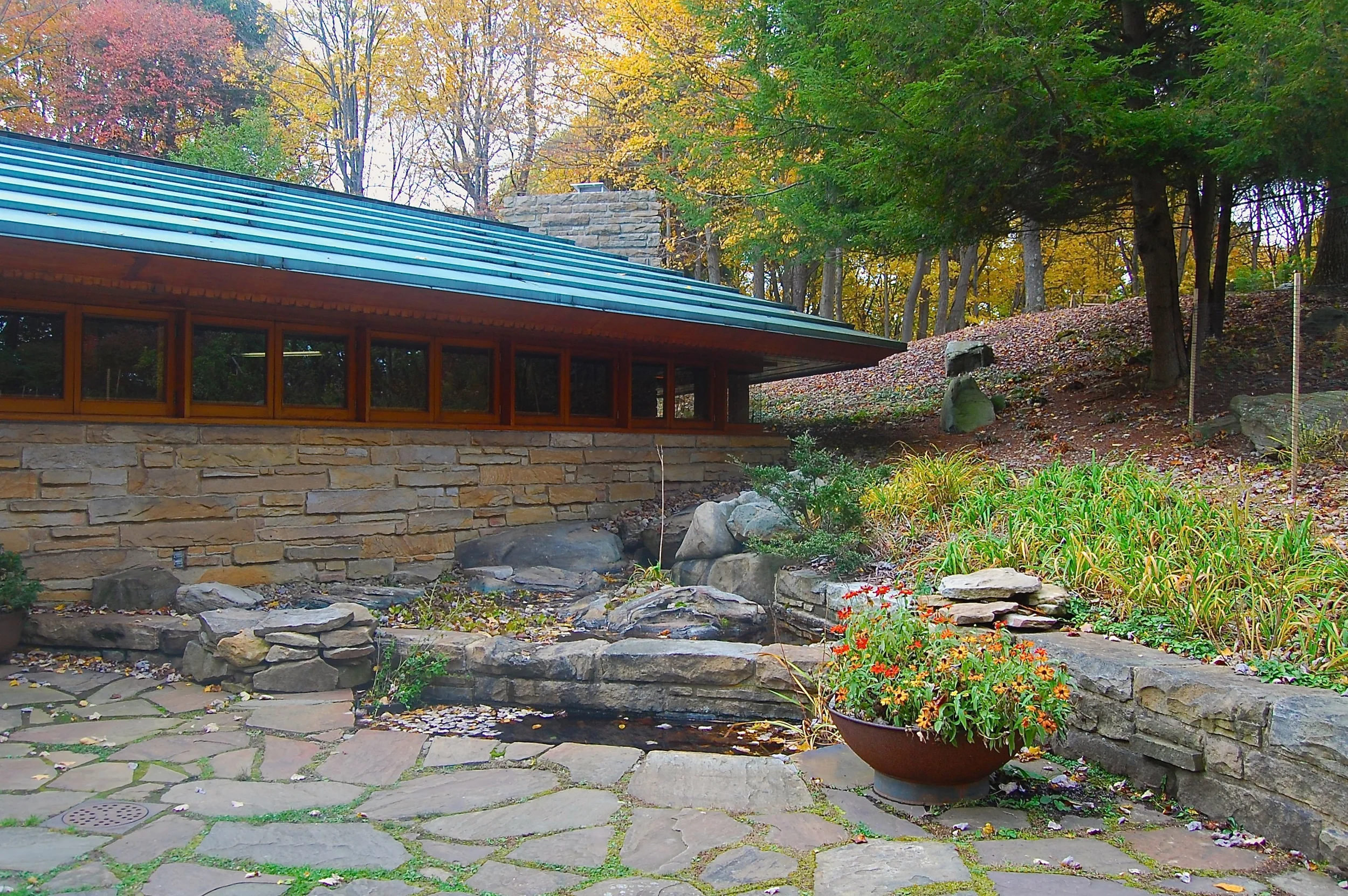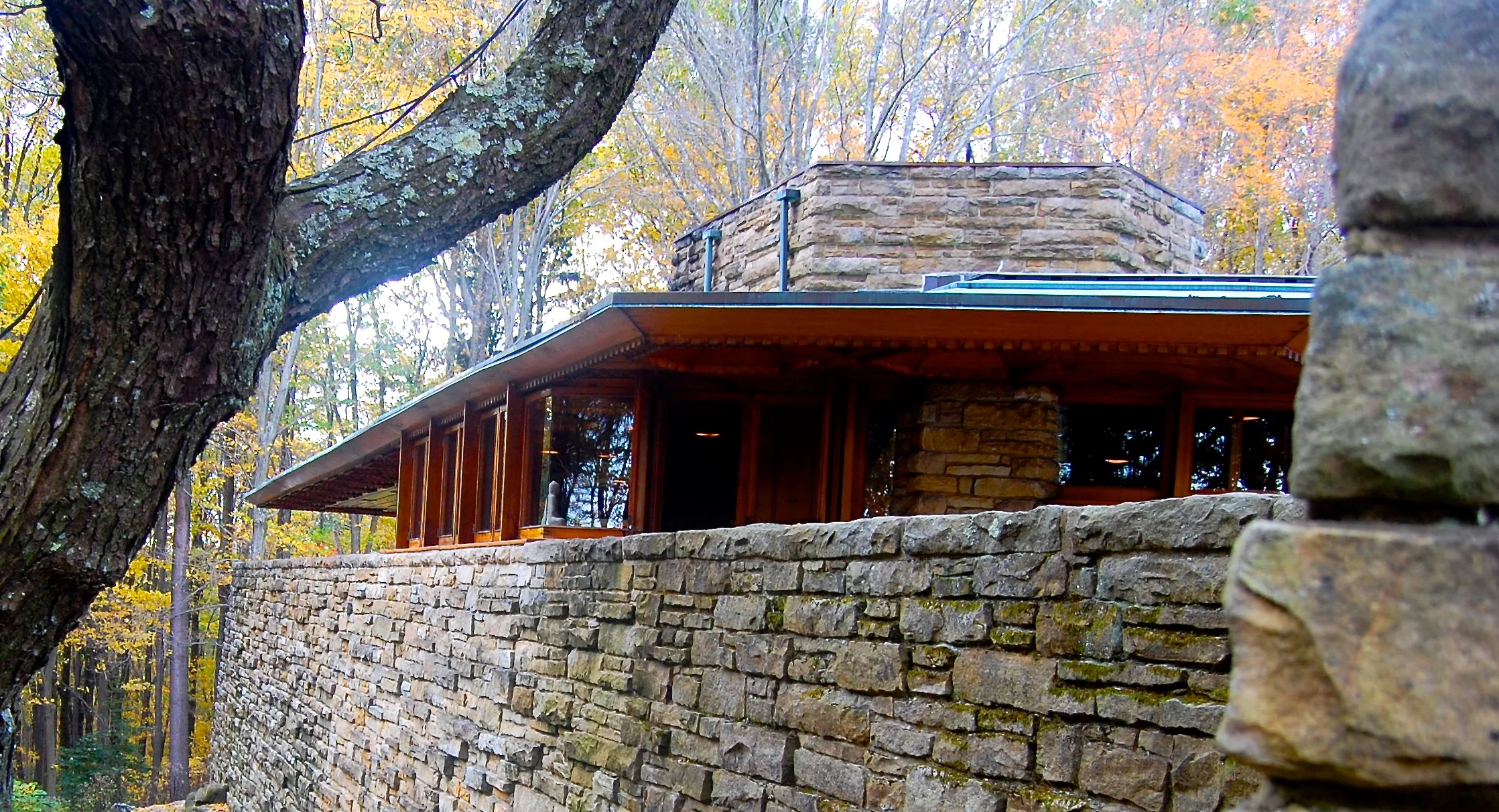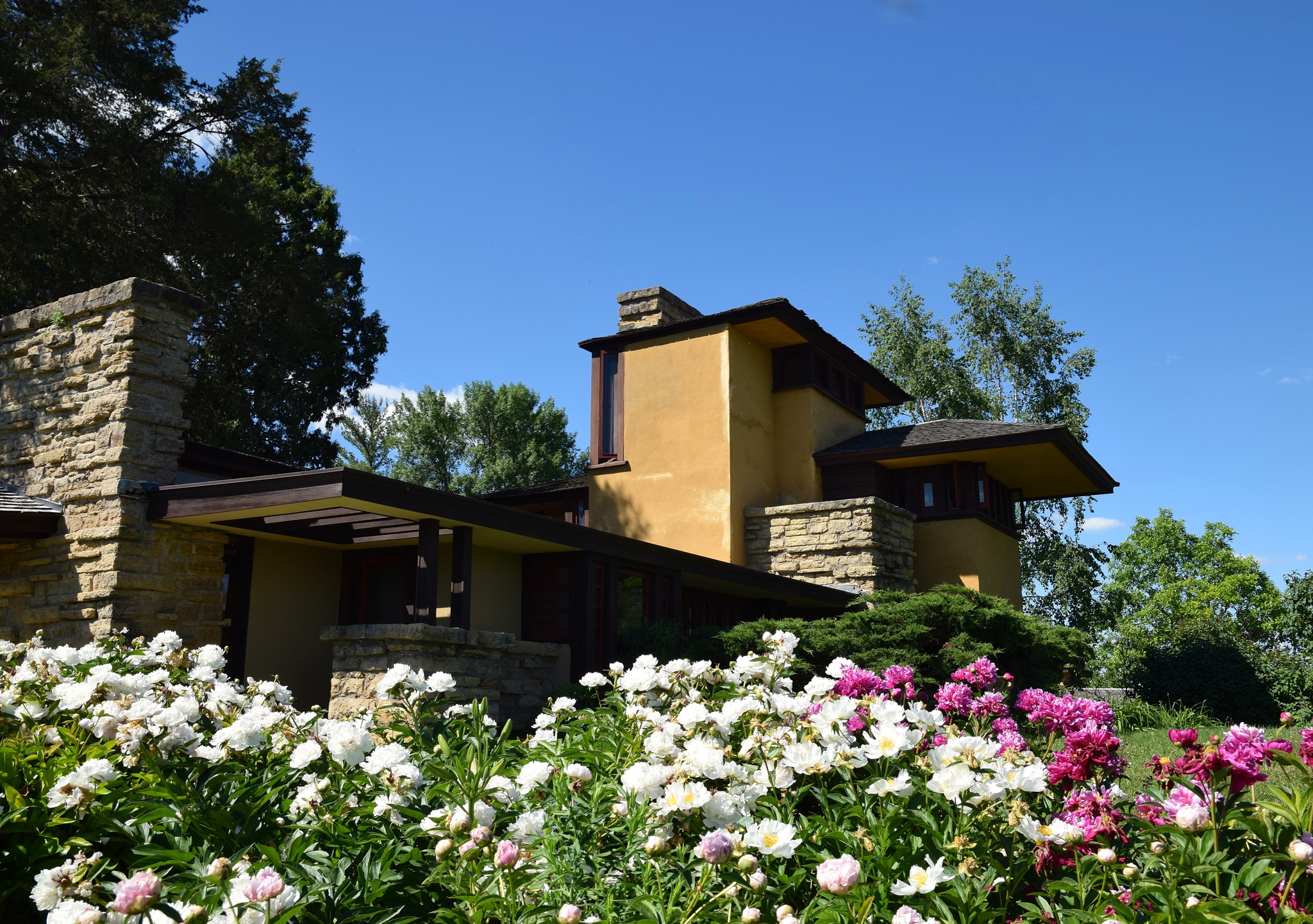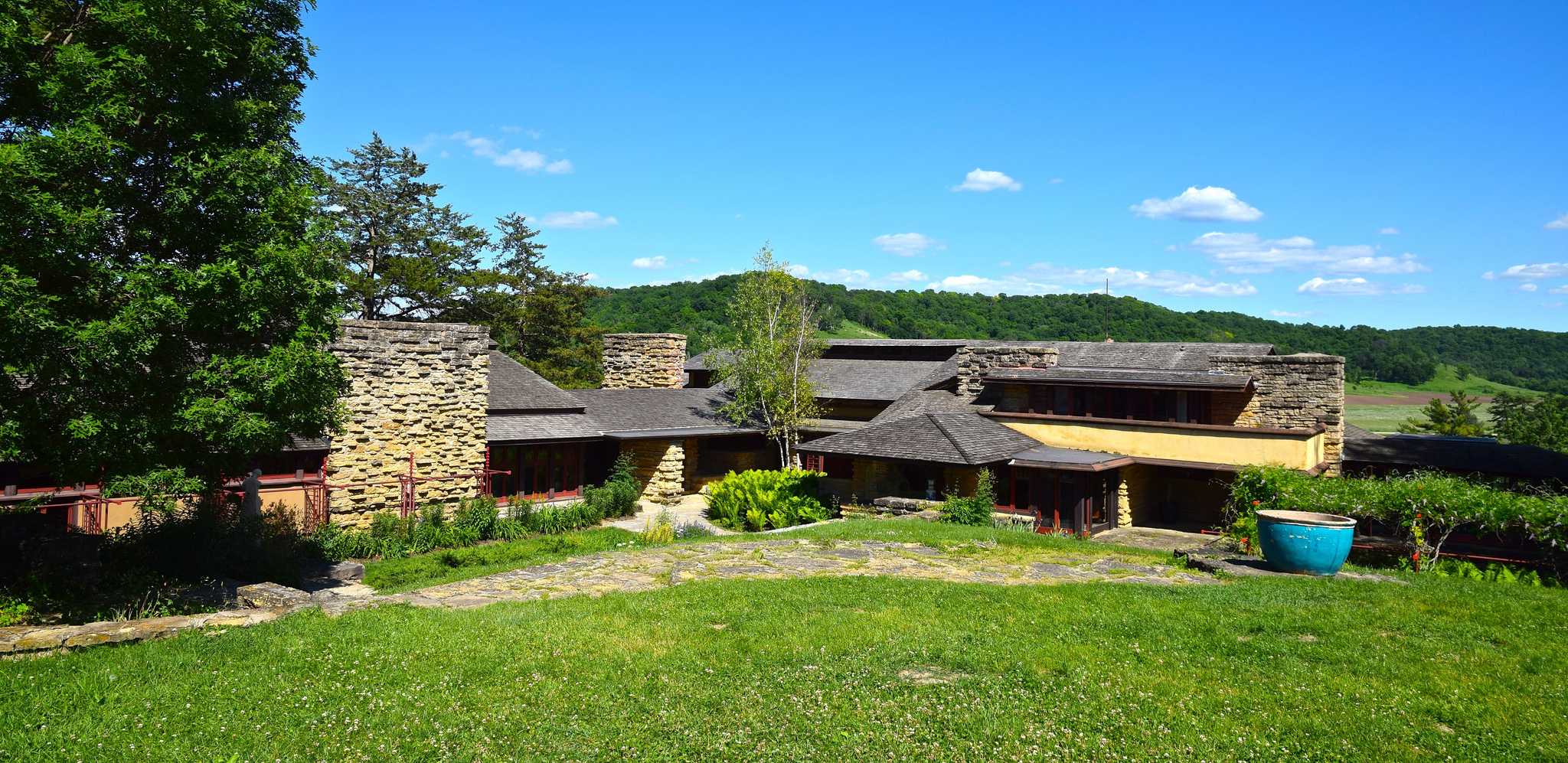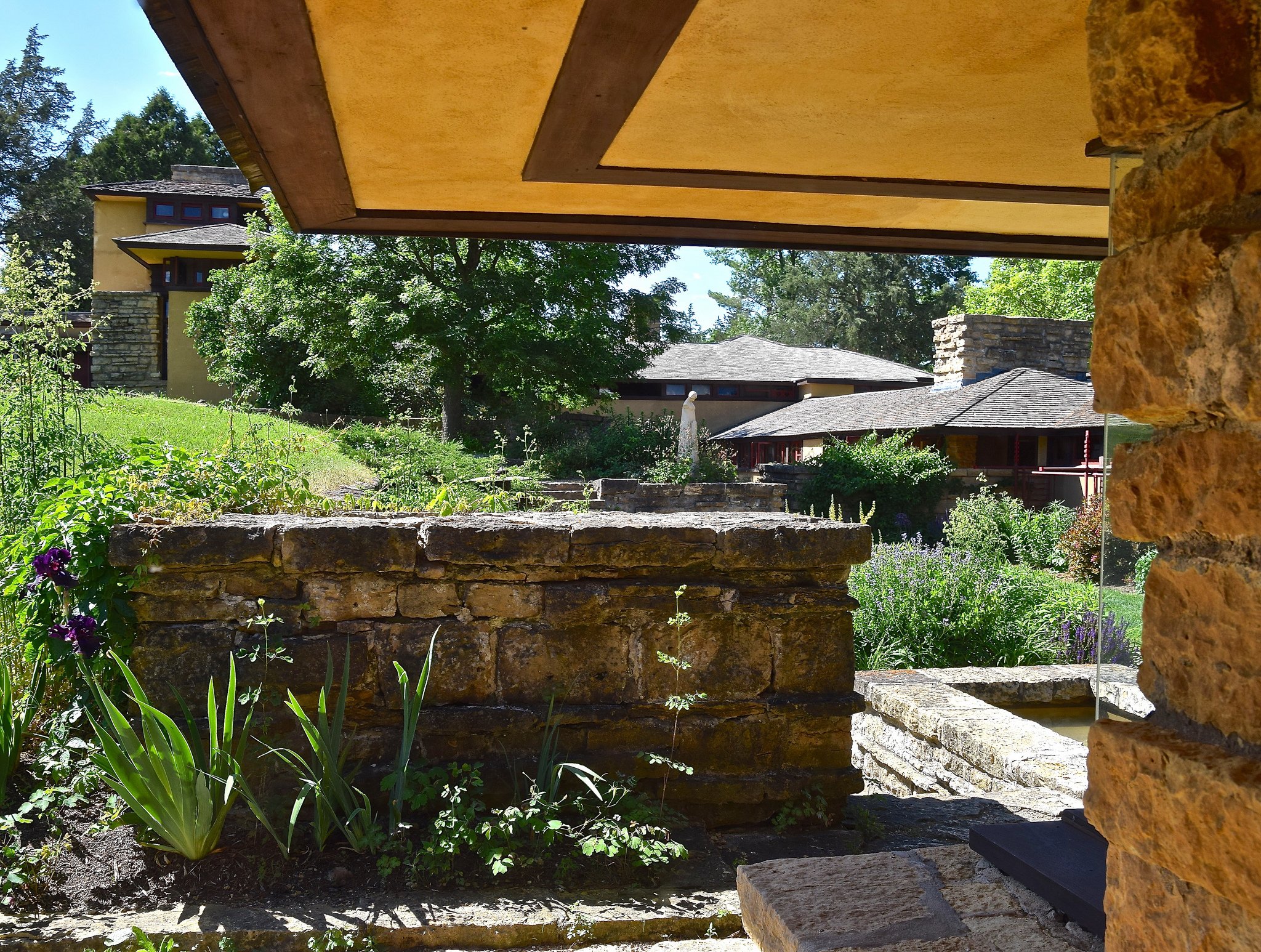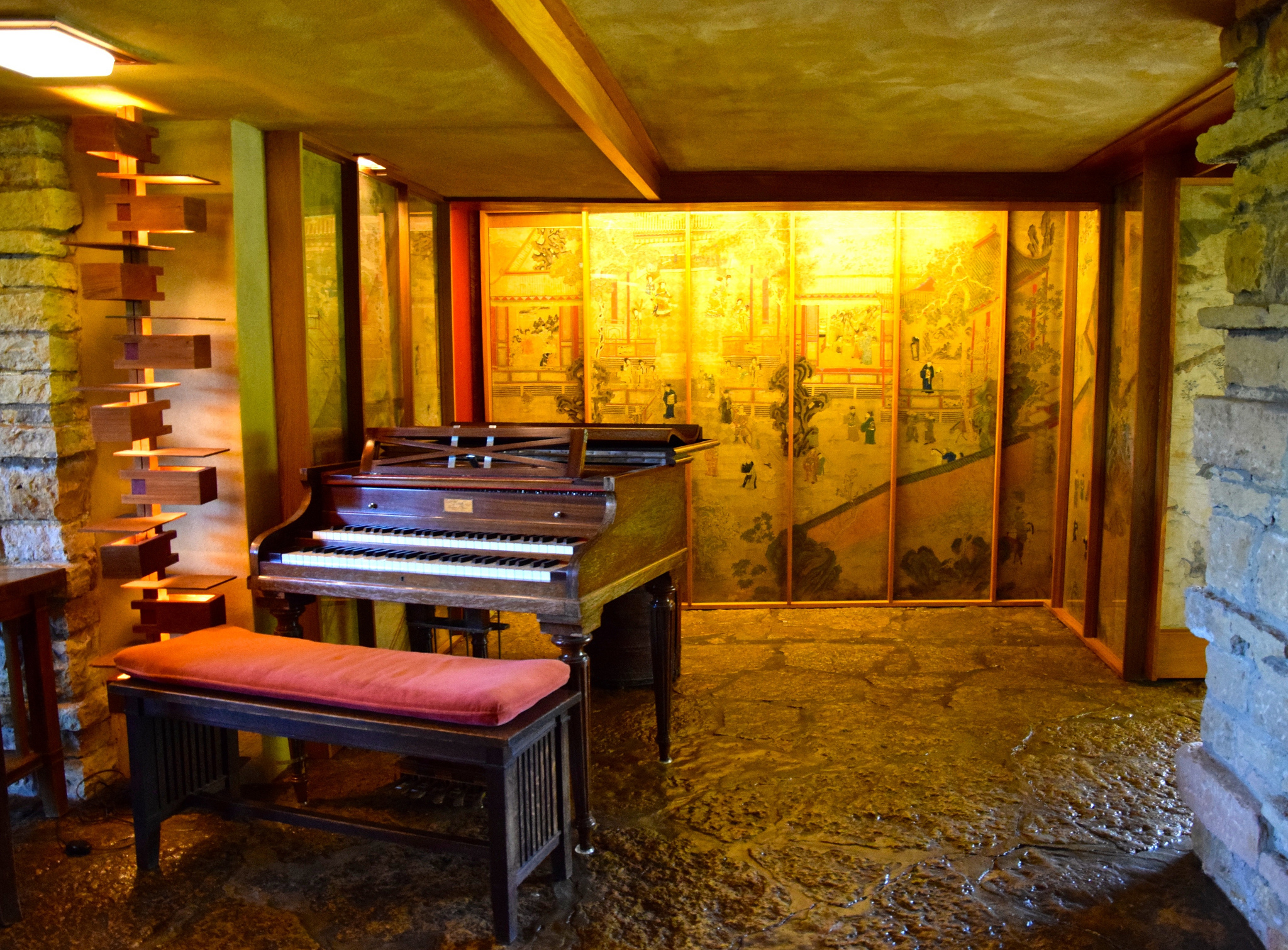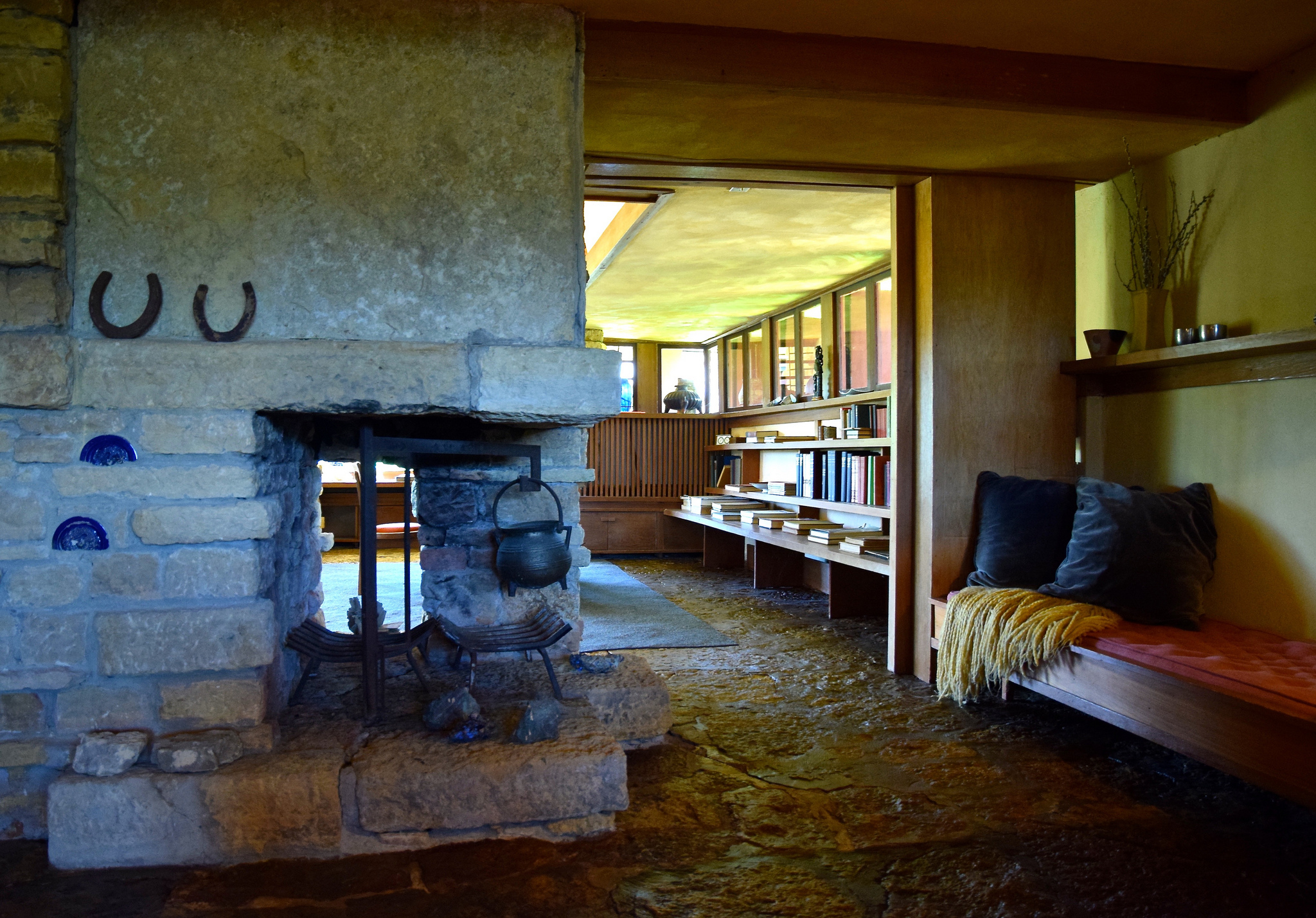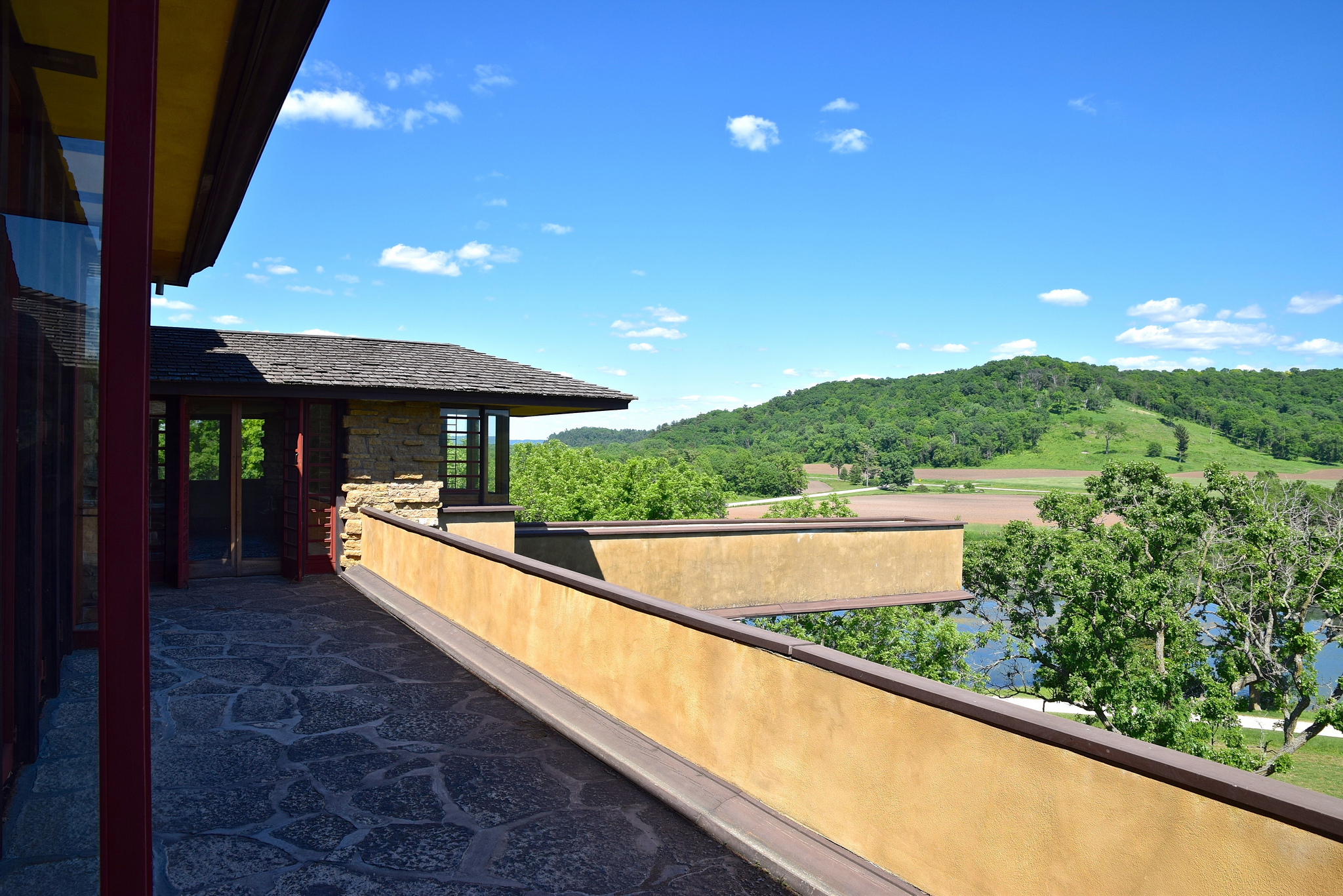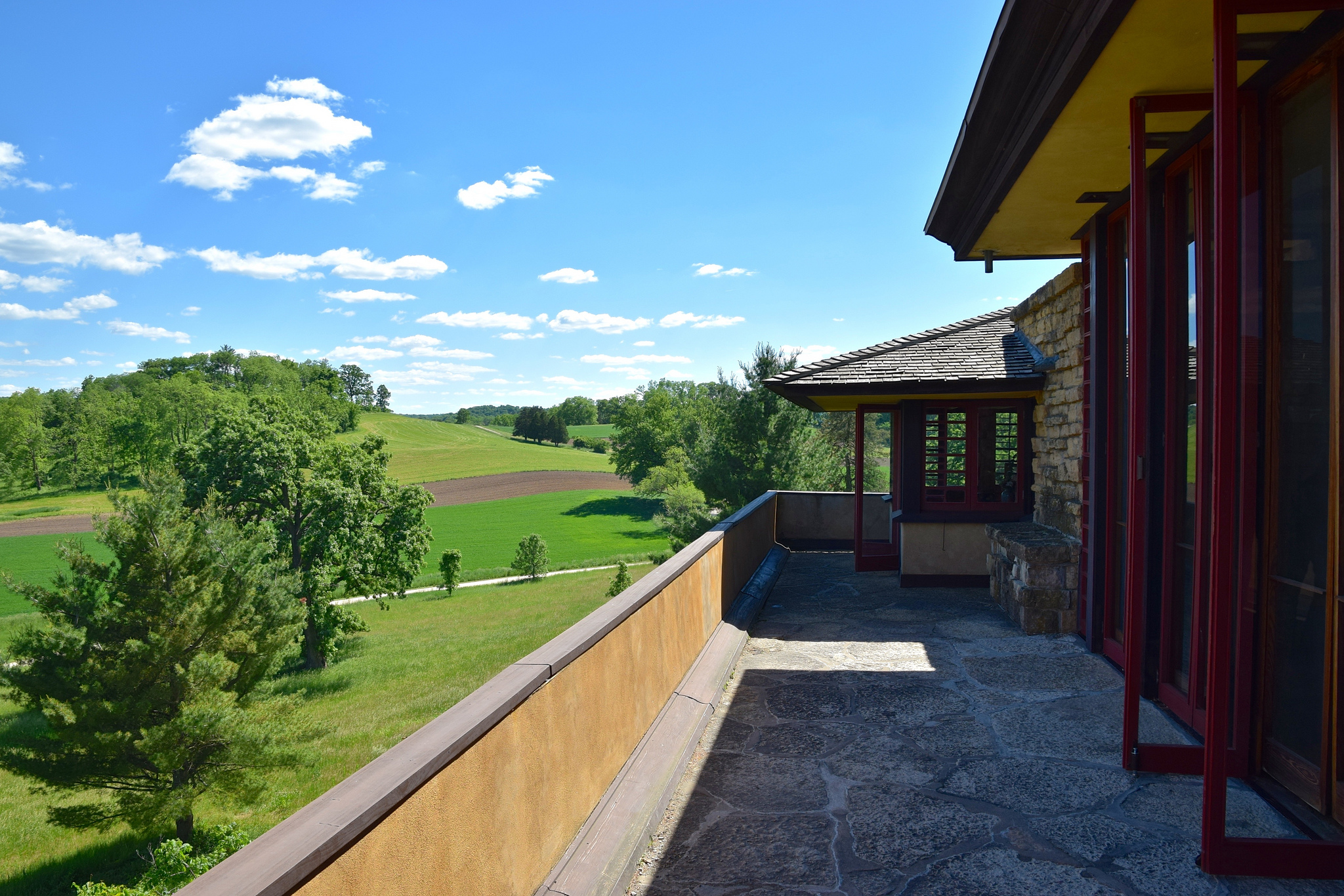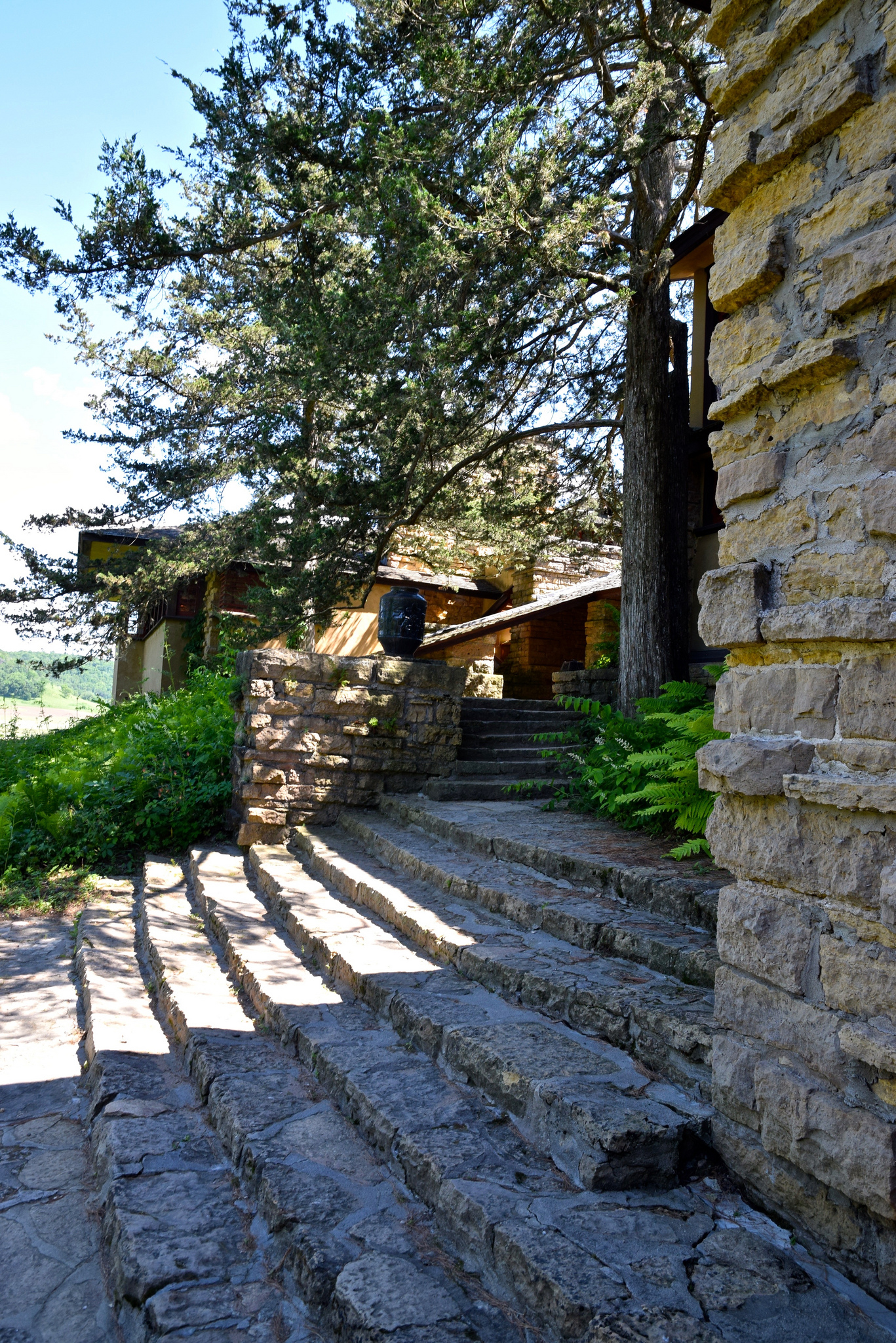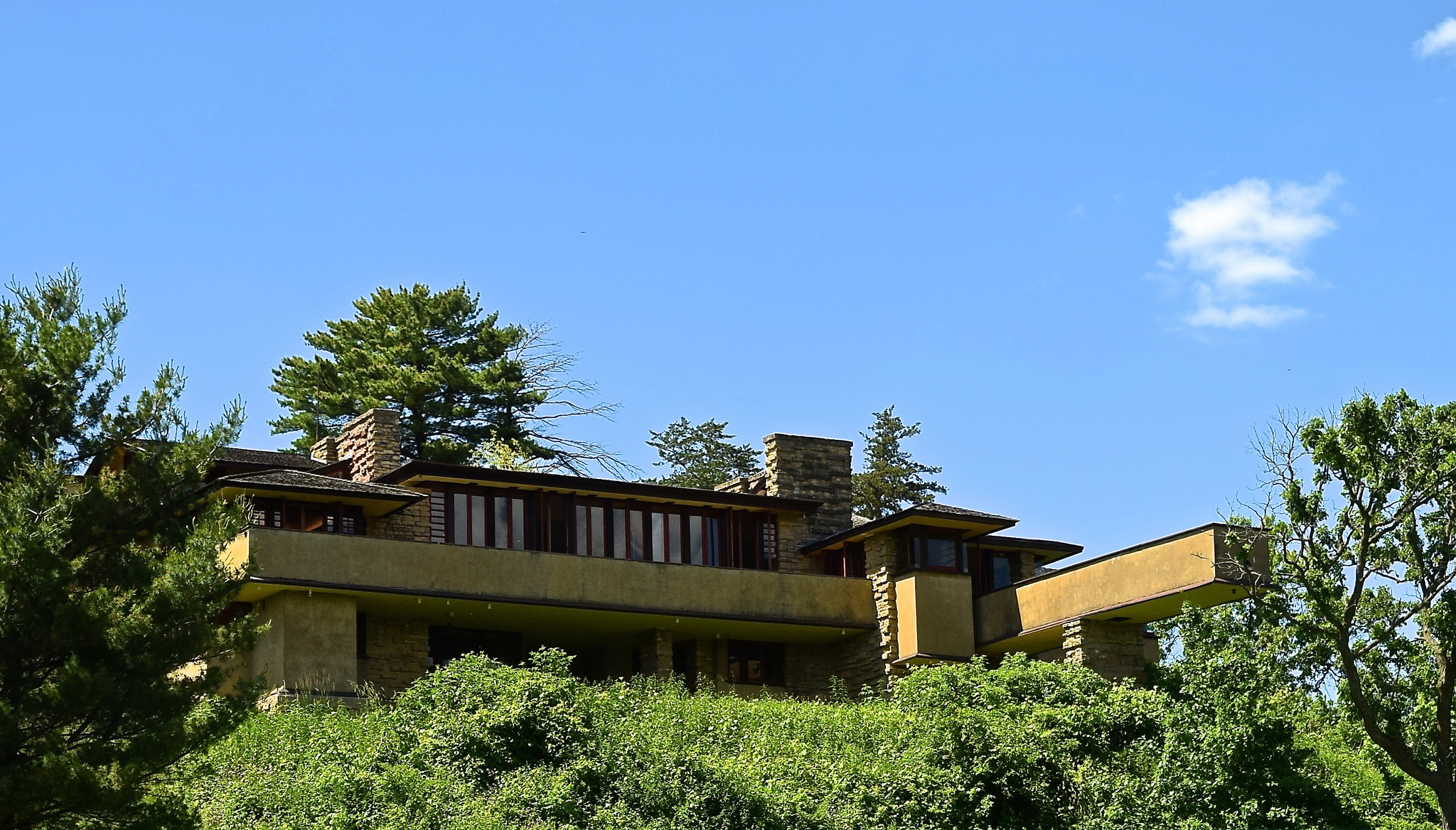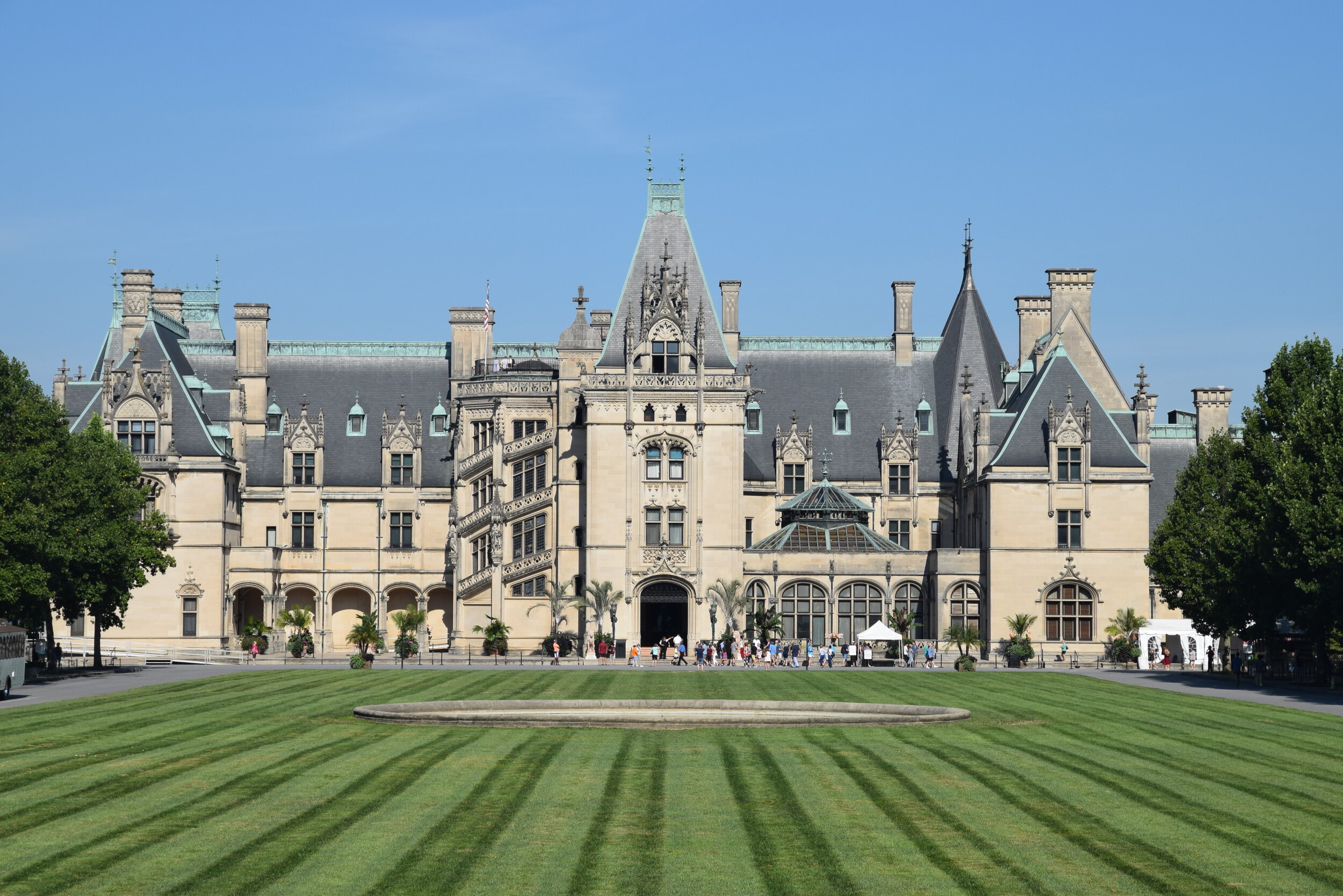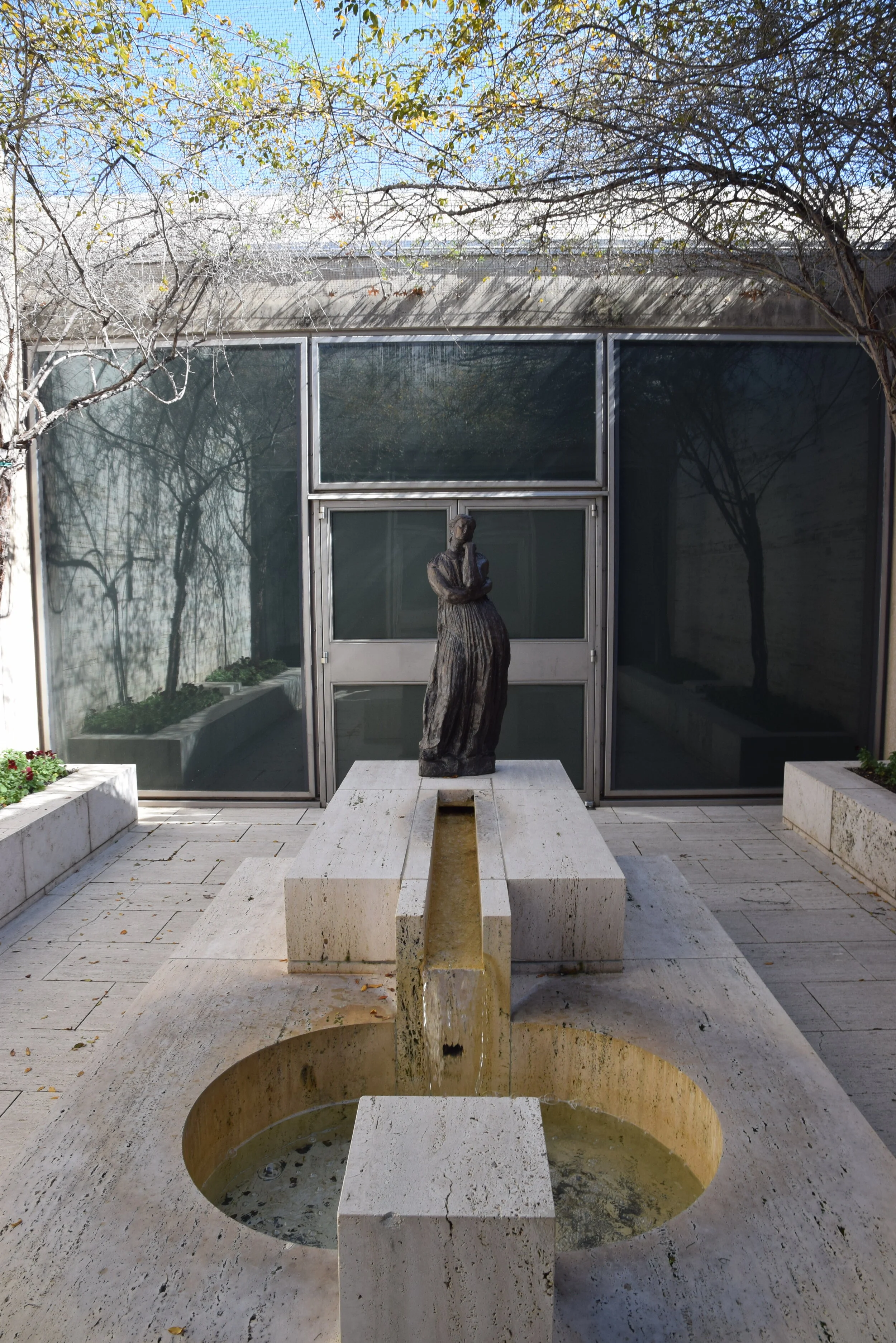Finding Frank: FLW across the USA
/A lot has been written about Frank Lloyd Wright: about his designs, his architectural philosophies, his personal life, his witty comments and analogies. The designer and his works are so compelling, that the American Institute of Architects (AIA) has described him as the greatest American architect of all time! Whenever such a bold statement is made, one automatically begins to brace for the expected arguments. Is he really the “greatest” of American architects? Did you really mean to say “of all time?”
Entrance sign for Fallingwater
There are many debatable things about Frank Lloyd Wright , but there are plenty impressive facts too. Wright lived to be 91 and had over 500 of his designs realized during his career. His influence is far spread over his native country, with nearly one design in each of the 50 United States. Consequently, there are books and websites dedicated to connecting people to FLW designs all over America. Here are some of our favorite FLW projects from the Eyeing Design Gallery.
As one might suspect, states like Hawaii and Alaska do not have a Frank Lloyd Wright design to call their own. But, some places have a high concentration of FLW designs, like his suburban hometown of Oak Park, in Chicago, Illinois. Mill Run, Pennsylvania is another place that showcases multiple Frank Lloyd Wright designs, and only minutes from each other. This very rural area is worth a visit as it is close to the wonderful Ohiopyle Sate Park, and is home to Fallingwater, Wright’s most famous house. Only a 15-minute drive from Fallingwater is a second FLW project, designed 20 years later called Kentuck Knob. Here is a visual comparison of the two stylistically different houses form Wright’s long career.
Fallingwater
Fallingwater
Fallingwater is often described as Wright’s master piece. After working for many years, at age 67, Wright was asked to design a summer home for the famous Kaufmann family who enjoyed a small Pennsylvania falls as a vacation get away. Wright’s melding of modern architecture principals and the naturally beautiful site was so inspirational, that after its completion, the house was featured on the cover of Time magazine in 1938. The house demonstrates Frank Lloyd Wright’s ideas for Organic Architecture by using natural materials from the site and integrating the building into the existing landscape versus siting the house on top of the land. While most architects might be temped to site the house with a view of the waterfall the Kaufmann’s enjoyed, Wright literally hangs most of Fallingwater’s living spaces over the waterfall, intimately brining the sounds and views of the site into the interior of the house. The house is made of natural materials, like stone minded on site, but it is very modern in its organization. The interior spaces flow together in what is known as an open floor plan. Only private spaces are separated with walls and doors. This allows for unobstructed views of nature from throughout the house. In fact everything about the house suggest that what is outside is so wonderful, one should go outside and enjoy it. What makes the design so remarkable and celebrated is that these very modern ideas, while common for today’s standards, were being considered and applied to a house over 70 years ago. Its innovation and beauty are considered to be so important to architecture, the house is a registered National Historic Landmark.
Kentuck Knob
View from atop Kentuck Knob
Kentuck Knob is a house named after its site, called a knob, another term for a rounded hill. Keeping with his Organic architectural philosophies and with a very different site then Fallingwater, Wright embeds this house into the hillside. This allows the architect to create very different experiences when visitors view the house from different parts of the hill. When approaching Kentuck Knob, visitors enter a circular entrance and see a low copper roof that, in some areas, almost touch the crest of the hill. When exiting the back of the house, however, the hillside angles away from the house creating a stunning overlook from a highly elevated stone porch. Designed 20 years after Fallingwater, Kentuck Knob is an example of Wrights Usonian style, an expansion of his Organic architectural ideas. The Usonian style was Wright's attempt at creating affordable houses that were American. Like Wrights previous ideas about construction, the Usonian style utilizes natural materials and aims at expressing their natural beauty without covering them up with paints and other finishes. The architect thought using local materials, with little in the way of finishes, would save money. So, Kentuck Knob is a Usonian home that utilizing only three primary materials.
It is hard to visit a Frank Lloyd Wright project without discovering the passion he had for his projects. There is evidence of his consideration for so many aspects of each of his architectural designs. It is also hard not to admire the boldness in the evolution of his architecture throughout his career. Wright has designed so many architectural gems (here is one from our Laser Etchings Collection) It might not feel comfortable to call Frank Lloyd Wright "the greatest American architect." Certainly, he is a great American architect worth praise.
Let us know which Wright house is right for you...Fallingwater or Kentuck Knob?
*Places and Perspectives is a blog devoted to exploring topics and images that inspire the sense of place. We welcome suggestions on places and topics readers want to learn about and see featured in our blog.



